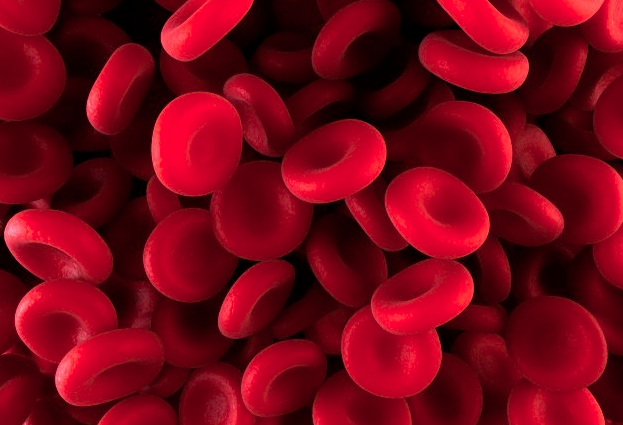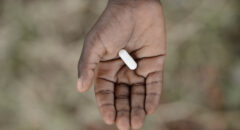
Sickle cell anemia affects the red blood cells. About one in every 600 Blacks is born with sickle cell, and one in 12 blacks carry the sickle cell trait.
But what is sickle cell anemia?
Blood 101
Normal red blood cells are smooth and round like doughnuts. They move easily through blood vessels to carry oxygen to all parts of the body.
What is Sickle Cell Disease?
Sickle cell disease is a group of inherited red blood cell disorders. It’s not like a cold or the flu. You can’t “catch” sickle cell disease or trait from another person. And you can’t get it from a blood transfusion. You have to be born with it.
With sickle cell disease, red blood cells become hard and sticky and look like a C-shaped farm tool called a “sickle.” The sickle cells die early, which causes a constant shortage of red blood cells. When these hard and pointed red cells go through the small blood vessels, they tend to get stuck and block the flow of blood. This can cause pain, damage, and a low blood count or anemia.
What Causes Sickle Cell Anemia?
People with sickle cell anemia inherit two genes, one from each parent, that are variant (different from normal). The variant genes are call sickle cell genes.
The sickle cell genes tell the body to make the variant hemoglobin (hee-muh-glow-bin) that results in deformed red blood cells. Hemoglobin is the protein in red blood cells that carries oxygen to all parts of the body.
Children who inherit sickle cell genes from both parents will have sickle cell anemia. Children who inherit the sickle cell gene from only one parent will not have the disease. They will have sickle cell trait. People with sickle cell trait:
- Generally have no symptoms
- Live normal lives
- Can pass the sickle cell gene on to their children.
When two people with sickle cell trait have a baby, there is a:
- One in four chance (25 percent) the baby will inherit two sickle cell genes and have the disease.
- One in four chance (25 percent) the baby will inherit two normal genes and not have the disease or trait.
- Two in four chance (50 percent) the baby will inherit one normal gene and one sickle cell gene. The baby will not have the disease, but will have sickle cell trait like the parents.
The presence of two sickle cell genes (SS) is needed for sickle cell anemia. If each parent carries one sickle hemoglobin gene (S) and one normal gene (A), with each pregnancy, there is a 25 percent chance of the child’s inheriting two SS genes and having sickle cell anemia; a 25 percent chance of inheriting two AA genes and not having the disease; and a 50 percent chance of being an unaffected carrier (AS) like the parents.
Who is affected by sickle cell disease?
Sickle cell disease can affect people from all walks of life, including those whose ancestors come from Africa, South or Central America, the Caribbean, Mediterranean countries, India, and Saudi Arabia. In the United States, 1 in 400 African-American newborns has the disease. In addition, more than 3 million people carry the gene that can mean that their children could inherit the disease.
Sickle cell anemia affects millions of people throughout the world. It is particularly common in people whose families come from:
- Parts of Africa (the region south of the Sahara Desert)
- Spanish-speaking areas like South America, Cuba, and Central America
- Saudi Arabia
- India
- Mediterranean countries, such as Turkey, Greece, and Italy.
In the United States, sickle cell anemia affects about 72,000 people. The families of most of the people affected come from Africa. The disease occurs in about:
- One in every 600 African-American births
- One in every 1,000-1,400 Hispanic-American births.
About 2 million Americans carry the sickle cell trait. About 1 in 12 African Americans have the trait.
Common Sickle Cell Terms
Anemia is a shortage of red blood cells in your blood. In sickle cell anemia, this shortage of red blood cells occurs because sickle cells do not last very long. It is hard for your body to make new red blood cells fast enough to keep up. Normal red blood cells last about 120 days in the bloodstream. Sickle cells die after only about 10 to 20 days.
Sickle cell trait is different from sickle cell anemia. A person with sickle cell trait does not have the disease but carries the gene that causes the disease. Persons with sickle cell trait can pass the gene to their children.
What Are the Signs and Symptoms of Sickle Cell Anemia?
The signs and symptoms of sickle cell anemia are different in each person. Some people have mild symptoms. Others have very
severe symptoms and are often hospitalized for treatment. The most common symptoms or signs are related to:
- Anemia
- Pain when sickle-shaped red blood cells block the flow of blood to an organ
- Other more specific symptoms.
The general symptoms or signs of anemia are:
- Fatigue (feeling very tired)
- Paleness
- Yellowing of the skin and eyes (jaundice)
- Shortness of breath.
Pain is the symptom of sickle cell anemia that most people are familiar with. It occurs in both children and adults. Pain results from blocked blood and oxygen. Painful events or crises may occur in any body organ or joint. Some patients have painful crises less than once a year. Others may have as many as 15 or even more crises in a year. The pain can be acute (sudden), chronic (long lasting), or a mixture of the two.
- Acute pain is the most common type of pain. It is sudden pain that can range from a mild ache to very severe pain. The pain usually lasts from hours to a few days. With complications or poor treatment, the pain can last for weeks.
- Chronic pain usually lasts 3 to 6 months or longer. Chronic pain can be hard to bear and mentally draining. This can severely limit daily activities.
- Mixed pain is a combination both of acute and chronic pain.
Other more specific symptoms include:
- Hand-foot syndrome. When the small blood vessels in hands or feet are blocked, pain and swelling can occur, along with fever. One or both hands and/or feet may be affected at the same time. This may be the first symptom of sickle cell anemia in infants. Pain may be felt in the many bones of the hands and feet. Swelling usually occurs on the back of the hands and feet and moves into the fingers and toes.
- Eye problems. The retina is a thin layer of tissue at the back of the eye that receives and processes visual images. When the retina does not get enough blood, it can weaken and cause problems. These problems can be serious enough to cause blindness.
- Infections. Both children and adults with sickle cell anemia have a hard time fighting off infections. The spleen is an organ in your body that helps fight infection. In sickle cell anemia, the spleen can become damaged and unable to do its job. Infants and young children with a damaged spleen are more likely to get lethal infections.
What are the complications of sickle cell disease?
Again, people with sickle cell disease, especially infants and children, are more at risk for harmful infections. For example, pneumonia is a leading cause of death in infants and young children with sickle cell disease.
Other complications of sickle cell disease can include the following:
• Acute Chest Syndrome (chest pain, fever and difficulty breathing)
• Splenic Sequestration (enlargement of the spleen)
• Stroke
• Vision loss
• Gallstones
• Organ damage
Where can I get screened for sickle cell disease?
Sickle cell disease is diagnosed with a simple blood test from your physician. It most often is detected at birth during routine newborn screening tests at the hospital. In addition, sickle cell disease can be diagnosed before birth.
Because children with sickle cell disease are at an increased risk of infection and other health problems, early diagnosis and treatment are important.
Is there a cure for sickle cell disease?
The only cure for sickle cell disease is bone marrow or stem cell transplant.
There is no single best treatment for all people with sickle cell disease. Treatment options are different for each person depending on their symptoms.
Sickle Cell & You
Sickle cell anemia is a serious disease and there is no universal cure. Bone marrow transplantation offers a cure, but very few patients have matched donors. Some patients also do not want bone marrow transplants because of the risks involved. Over the past 30 years, doctors have learned a great deal about the disease. They know what causes it, what it does to your body, and how to treat many of the complications. Today, with good health care, many people with the disease:
- Are in reasonably good health much of the time
- Live fairly normal lives
- Live 40 to 50 years and longer.








